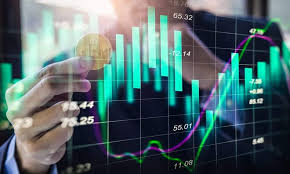

The Ultimate Guide to Trading Futures Crypto
In the ever-evolving landscape of finance, Trading Futures Crypto has emerged as a popular and potentially lucrative avenue for traders worldwide. With the growth of cryptocurrencies and the innovation of futures contracts, investors now have more opportunities to leverage their positions and manage risk effectively. For those interested in diving into this complex market, it’s essential to understand the mechanics of trading futures in the crypto space. In this article, we will explore what futures trading is, its benefits, risks, market dynamics, and key strategies you can employ. If you’re seeking more resources on recovering from setbacks in trading, Trading Futures Crypto click here for additional insights.
What are Futures Contracts?
Futures contracts are standardized agreements to buy or sell an asset at a predetermined price at a specific future date. In the context of crypto, these contracts allow traders to speculate on the future price of various cryptocurrencies, such as Bitcoin, Ethereum, and others. Unlike traditional asset trading, futures trading doesn’t require the trader to own the underlying asset, which offers several unique benefits.
Benefits of Trading Futures Crypto
1. **Leverage**: One of the primary attractions of futures trading is the ability to use leverage. Traders can control a large position with a relatively small amount of capital. This means that even minor price movements can lead to significant profits—or losses.
2. **Hedging**: Futures can serve as an effective hedging tool. For instance, if an investor holds a large position in Bitcoin, they can enter a short futures position to mitigate potential losses in case of a downturn.
3. **24/7 Market Access**: Unlike traditional stock markets, cryptocurrency futures markets operate around the clock, providing traders the flexibility to react to price movements in real time.
4. **Variety of Trading Strategies**: Futures trading allows for the implementation of various strategies, including day trading, swing trading, and long-term investments, depending on the trader’s goals and risk tolerance.
Risks Involved in Trading Futures Crypto
Despite the potential for gains, trading futures crypto is not without its risks. Here are some of the main risks traders should be aware of:
1. **Market Volatility**: Cryptocurrencies are known for their extreme volatility. Rapid price fluctuations can lead to substantial losses, especially for those using high leverage.
2. **Liquidity Risks**: Not all cryptocurrency futures markets have the same level of liquidity. Low liquidity can result in slippage, where an order is executed at a different price than expected.
3. **Complexity**: Futures trading requires a deeper understanding of market mechanisms, which can be daunting for novices. Mistakes can easily lead to significant financial loss.
4. **Psychological Factors**: Trading futures can be psychologically taxing, as the pressure of potential losses and the emotions involved can lead to irrational decision-making.
Understanding Market Dynamics
To navigate the crypto futures market successfully, a trader must understand the various factors influencing price movements:
– **Market Sentiment**: Positive or negative news about cryptocurrencies can impact trader sentiment, influencing prices significantly.

– **Regulatory Changes**: As governments and regulatory bodies establish new guidelines for cryptocurrencies, these changes can lead to price fluctuations.
– **Technological Developments**: Innovations in blockchain technology or changes in the operational protocols of cryptocurrencies can also influence futures prices.
– **Global Economic Indicators**: Broader economic trends, including inflation rates and global economic health, can impact investor behavior and subsequently the prices of cryptocurrencies.
Trading Strategies for Futures Crypto
Successful trading in the futures market often hinges on effective strategies. Here are a few key strategies that traders can employ:
1. **Technical Analysis**: Analyzing historical price data and chart patterns can help traders forecast future price movements. Traders often use indicators like moving averages, Relative Strength Index (RSI), and Bollinger Bands.
2. **Fundamental Analysis**: Understanding the fundamentals behind a cryptocurrency, such as its use-case, adoption rates, and market position, can provide insights into long-term price trends.
3. **Diversification**: Just like any investment strategy, a diversified portfolio can help mitigate risks. Instead of focusing solely on one cryptocurrency, spreading investments across multiple assets can provide more stability.
4. **Risk Management**: Implementing risk management techniques, such as setting stop-loss orders, can protect against unexpected market movements. It’s crucial to define risk tolerance levels before entering any trade.
Getting Started with Crypto Futures Trading
If you are considering trading futures in the crypto market, follow these steps to get started:
1. **Choose a Reputable Exchange**: Ensure that you select a reliable cryptocurrency exchange that offers futures trading. Look for features like security, user experience, and available trading pairs.
2. **Create an Account**: Register and verify your account. This will often involve identity verification, which is crucial for security and regulatory compliance.
3. **Fund Your Account**: After registration, deposit funds into your trading account. Be mindful of the amount you wish to trade, considering your risk tolerance and trading strategy.
4. **Start Trading**: Begin by trading smaller amounts to familiarize yourself with the platform and trading strategies.
Conclusion
Trading Futures Crypto offers traders opportunities to profit from the extreme volatility of the cryptocurrency market while providing tools for risk management. However, it is vital to approach this market with caution, armed with knowledge and a clear strategy. By understanding the mechanics behind futures trading, the associated risks, and employing effective strategies, traders can enhance their chances of success. Whether you are a seasoned trader or new to the crypto world, continuous learning and adaptation are key to thriving in this dynamic market.







